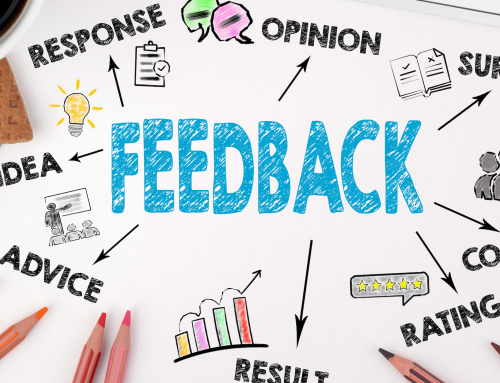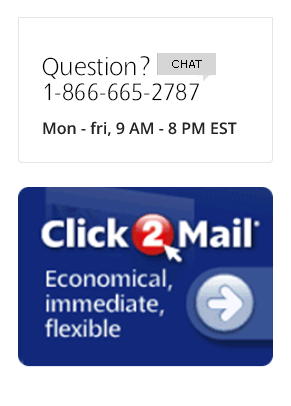If you have a mailbox then it probably doesn’t shock you to hear that 44% of Americans throw out their mail, unopened.
Impersonal ads, tossed. Irrelevant notices, thrown. Already-paid bills, slam dunked.
But did you know that B2B direct mail is 37 times more effective than email, according to a statistic published by the Data and Marketing Association? That means you could send an email once a week for 36 weeks to your prospect and it won’t get opened; on the other hand, send a physical piece of mail and it’s guaranteed to be in their hands.
Once your mail is in the fingers of your hopefully-soon-to-be customer, how do you send the message that your mail is worth opening and keeping?
Unlike email, which comes into your inbox the same way, mail has a few more creative options to be “engaging.”
In this post, we’re going to look ten ideas to create mail that doesn’t just get tossed in the garbage. Want to create mail that lasts? Read on.
Here’s ten unconventional ideas and tools for creating a mailer that stands out
1. Put a personalized map that outlines exactly where your customer needs to go.
Humans are visual beings. Our eyes are drawn to images faster than text. If you’re a local business, like a pizza shop, retail store, or walk-in office , you should see this.
, you should see this.
With today’s technology, you can add custom maps to your mail pieces. Maps4mail.com is a company that lets you add a map with the addressee’s location routed to your destination. It’s like looking at Google Maps on your phone.
Instead of a plain map, this technology prints a different map for each mail piece, so that the opener sees their unique route. This personalization creates a persuasive “just for me” feeling within the recipient because the mail piece would have be incorrect for anyone else.
2. “Add a lump, get a bump.”
Lumpymail.com claims that if your mail is “lumpy” — as in, oddly shaped — it will be stacked on top of the pile and always be opened. Due to pure human curiosity and the fact that postal services can’t stack lumpy mail, it’s opened 100% of the time.
“3D mail” products range from thumb drives to whoopee cushions to bank bags and more. The most hilarious example I found was for $3.50-$5.50, you can send a little plastic human foot and literally get a “foot in the door.”
3. Tactile mail changes the look and feel of your mail to draw attention to it.
To illustrate this point with a metaphor, imagine you are attending a network event and you receive (what feels like) hundreds of business cards. One business card is thicker than all the rest and feels coarser. It’s size is impressive and you pull it out of your pocket to view it. This business card has won the competition for your attention.
Adjusting the heft and texture of your mail can make it stand out from its typical smooth lightweight neighbors. A tactile variance can make all the difference, said Jeremy Zimmerman, Assistant Editor at Direct Marketing IQ.
4. Engage your recipients with interactive mail.
Usually, mail is made up of images and text, so ambitious (and well-funded) marketers will get creative and add a twist to their mail pieces.
Mercedes created an envelope that, when you lifted the flap, changed their coupe car into a convertible.
Some outside-the-box-thinkers will send a secret message written on a balloon. When the recipient inflates the balloon, the message becomes clear.
What would you put on your mailed balloon?
5. Design your mail to fold and give it a long shelf life.
Paper is a versatile medium. You don’t have to be a master-origamist to be able to make a cube or paper airplane. You could go all out and make a forest stand up in your stationery. Or have a box pop up with more surprises inside.
It could be as simple as a house pop up or a tri-fold. Give your mail piece the ability to stand on its own two feet with interactive cuts and folds.
6. QR codes don’t have to be ugly to work like magic
While some believe QR codes are dead, and most might agree they never really took off in the first place, did you know that every Twitter app has a QR code reader?
 Twitter introduced QR codes to their app at the end of 2016, and it works for any QR code, not just Twitter account links (like Snapcodes). That means over 328 million people have a QR scanner in their pockets (although they might not know it).
Twitter introduced QR codes to their app at the end of 2016, and it works for any QR code, not just Twitter account links (like Snapcodes). That means over 328 million people have a QR scanner in their pockets (although they might not know it).
QR codes (and PURLs – “Personalized URLs”) are great for tracking direct mail open rates. If someone scanned the QR code, you know that they read your mail and took action. Tracking this data helps with quantifying the ROI on your mail ad spend.
You probably didn’t know that QR codes can be works of art. Angry Birds designed a custom QR code to promote their mobile app.
Make a custom QR code here: https://goqr.me/.
7. If you’re limited to just paper, images, and text, you can still stand out by being funny.
Lisa Krowisnki runs Sapling Press, an Etsy shop that makes custom postcards and they. Are. funny!
Humor can go along way with building trust with your customers. Is there anything funny about the industry you’re in? Maybe challenge your team to come up with something comical to add to your next direct mail postcard campaign. Something that will make your customer crack a smile.
8. Don’t feel funny? Be beautiful instead.
Illustrations, photography, and art can give pause to anyone. But mail gets a bad rap for being ugly or plain.
In wit, the CEO of Scout Direct Marketing postcards, said in a podcast that the #1 error he sees companies making with their direct mail postcards is cramming them with too much information. The design gets complicated and crowded fast when the real estate is limited on a direct mail piece.

Instead, keep it simple and elegant. Easy-to-read and kind-on-the-eyes will go a long way.
Another Etsy shop, Little Paper Mama, makes prints for her customers. She uses floral accents and calligraphy to design beautiful invitations and cards.
If you’re doing a direct mailer, keep it simple. I know there’s pressure to make sure you’re getting your full message through, and that you spent a lot of money to do so, but resist the temptation to overcomplicate your postcard.
9. Google uses mail to reach the hard-to-reach.
Did you know Google uses direct mail postcards?
Google uses direct mail to reach local small business owners (bakers, tax offices, real estate firms, etc.) who might be too busy to pay attention to corporate emails.
As Chris Barr, director of marketing, puts it on LinkedIn, “Adwords is highly-addicting, competitive, and nearly impossible to shut down for fear of fewer leads, poor sales, loss of market share, etc. That’s why Google deploys vast marketing efforts to drive new advertiser acquisition and retention. And the best way to do so, according to overwhelming data,  is through direct mail. Google uses direct mail to deliver millions of marketing postcards to current and prospective advertisers each year.”
is through direct mail. Google uses direct mail to deliver millions of marketing postcards to current and prospective advertisers each year.”
It’s interesting that Google made Gmail, the world’s largest email provider, and yet, relies heavily on direct mail for its Adwords marketing. One’s not better than the other; balance, that’s informed by your customer data, is the key.
10. Use a 3D printer to make your logo and mail it to your customer.
Digital agency Viget in Falls Church, Virginia used a 3D printer to make a Christmas ornament out of their logo as a gift for clients.
The ornament arrives in a well-designed box, lights up, and serves as a reminder that the creative firm builds hardware, not just software.
Vigornament from Viget on Vimeo.
What could you build out of a 3D printer to mail to your customers?
We love brainstorming and strategizing creative ways to “wow” customers with direct mail.
We’ve been doing it since 2003. Learn more about our digital tools to create and send mail at Click2Mail.com, check out our Medium blog “Mail Nerds”, or give us a call at 866-665-2787.
Further reading:
How to Create an Indispensable Mailer
[Infographic] How To Send Direct Mail Online
Send mail from directly from Google Sheets, Google Forms, and 123 Contact and WuFoo Forms





